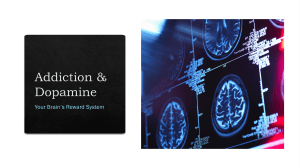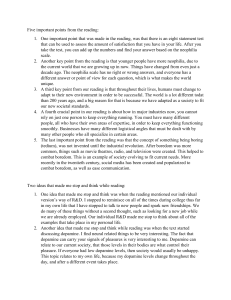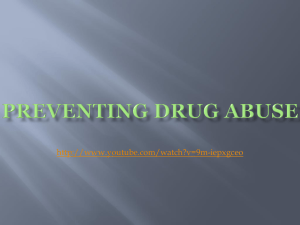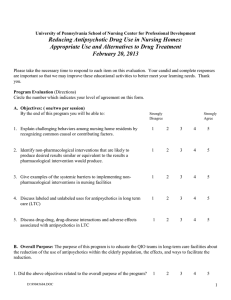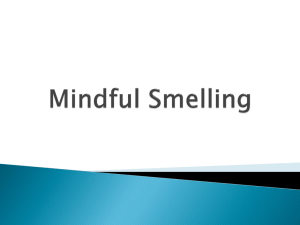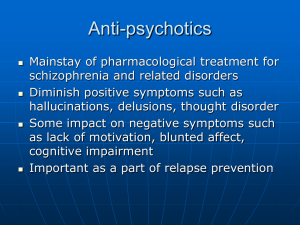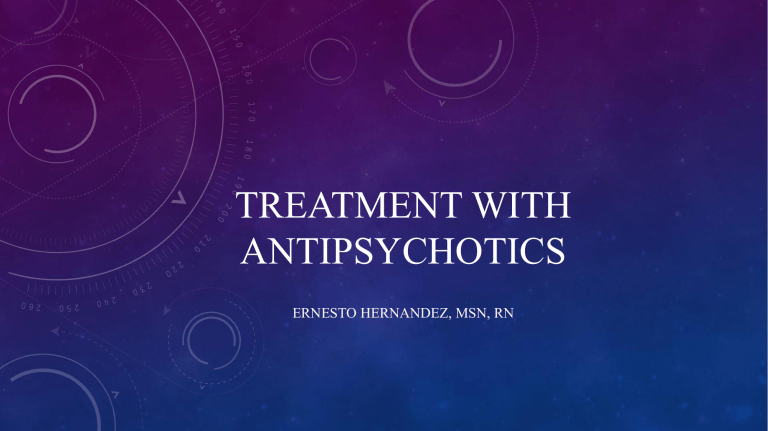
TREATMENT WITH ANTIPSYCHOTICS ERNESTO HERNANDEZ, MSN, RN SCHIZOPHRENIA SYMPTOMS • Positive & Negative SCHIZOPHRENIA • Neurobiological defect • Abnormalities lead to suspected impaired neuronal communication: • Suspected alterations in chemical neuronal signal transmission • Excess dopamine in mesolimbic pathway • Decreased dopamine in the mesocortical pathway • Excess glutamate • Decreased gamma-aminobutyric acid (GABA) • Decreased serotonin ATYPICAL ANTIPSYCHOTICS • Primary first-line treatment agents • Have fewer significant neurological side effects compared to typical antipsychotic medication • Effectively treat positive and negative symptoms • Function as serotonin-dopamine antagonists (SDAs) • D2 and 5HT2a blockade • Fewer clinically significant side effects related to EPS and TD compared to typical antipsychotics • Can cause extrapyramidal side effects (EPSE; see five common types in but with lower risk compared to typical antipsychotics • Lower incidence of tardive dyskinesia • Improved compliance ATYPICAL ANTIPSYCHOTICS • Mode of action: • In addition to the dopaminergic blockade found in first-generation antipsychotics, second- generation drugs capitalize on the interplay between dopamine and serotonin. Serotonin binds to 5HT2a heteroreceptors on dopamine (DA) neurons, thus further shutting off release of DA. By antagonizing (blocking) the 5HT2a heteroreceptors on DA neurons, DA release in the nigrostriatal, tuberoinfundibular, and mesocortical pathways is enhanced. • Dopamine pathways: These explain both the therapeutic effects and the side effects of the atypical antipsychotics. • Mesolimbic pathway: SDAs block dopamine in this pathway, causing decreased positive symptoms. • Mesocortical pathway: SDAs increase dopamine in this pathway, causing decreased negative symptoms. • Nigrostriatal pathway: Dopamine has a reciprocal relationship with acetylcholine (ACh). When serotonin is blocked by the SDA, dopamine increases; therefore, ACh decreases, which causes decreased EPSE. (EPSE is caused by increased ACh.) • Tuberoinfundibular pathway: Dopamine inhibits prolactin. The blockade of dopamine by SDAs cause prolactin to increase, causing galactorrhea and gynecomastia. • Hyperprolactinemia associated with the antipsychotics may cause sexual problems, galactorrhea, amenorrhea, gynecomastia, and bone demineralization in postmenopausal women not on estrogen. PHARMACOLOGICAL TREATMENT PHARMACOLOGICAL TREATMENT PHARMACOLOGICAL TREATMENT TYPICAL ANTIPSYCHOTICS • Cross-classified as neuroleptics because of significant side effects • Also referred to as first-generation antipsychotics • Useful for treating positive symptoms by blocking dopamine in the mesolimbic pathway • Can make negative symptoms worse by blocking dopamine in the mesocortical pathway • Therapeutic effect related primarily to D2 receptor blockade • Decanoate long-acting injectable dose forms of typical antipsychotics: • Prolixin-D (limited availability due to low production) • Haldol-D • High potency: Have a greater risk of EPSE but less risk of sedation and anticholinergic symptoms • Low potency: Have a greater risk of sedation and anticholinergic side effects but less risk of EPSE • Caffeine and nicotine cause diminished antipsychotic effect; dose may need to be higher TYPICAL ANTIPSYCHOTICS • High potency: Have a greater risk of EPSE but less risk of sedation and anticholinergic symptoms • Low potency: Have a greater risk of sedation and anticholinergic side effects but less risk of EPSE • Caffeine and nicotine cause diminished antipsychotic effect; dose may need to be higher • Because of multiple clinically significant side effects, are not considered first-line treatment agents • Side effects leading to poor adherence • High client teaching needs • EPSE most common side effect • Caused by D2 receptor antagonism (when dopamine receptors are blocked, ACh increases, which causes EPSE; a reciprocal relationship exists between ACh and dopamine) • Treated by use of anti-Parkinson drugs (cross-classified; see Table 11–7) • Anticholinergics • Antihistamines • Dopamine agonists • Benzodiazepines (BNZs) • Tardive dyskinesia (TD) • TD is a potentially irreversible movement disorder that may occur in people who are treated for more than 1 year with typical antipsychotics. • Symptoms consist of abnormal, involuntary movements such as lip smacking, chewing, tongue protrusion, or twisting movements of the trunk or limbs. • Perioral movements are most common. • Treatment involves discontinuation of the offending agent and often starting an atypical antipsychotic. EXTRAPYRAMIDAL SIDE EFFECTS (EPSE) PHARMACOLOGICAL TREATMENT • Adjunctive medications may be used to achieve full symptom control: • Antidepressants • Anxiolytics • Anticonvulsants NEUROLEPTIC MALIGNANT SYNDROME (NMS) • Rare but potentially life-threatening • Can occur at any point during treatment • Most common with typical but has been reported with atypical antipsychotics • Risk factors include • • Rapid dose escalation • Use of high-potency typical antipsychotic • Parenteral administration of antipsychotics Assess for symptoms known to occur first: Altered sensorium Hyperthermia Hyperreflexia Assess for symptoms of autonomic instability: Hypotension Extreme muscular rigidity Hyperthermia Tachycardia Diaphoresis Tachypnea Coma and potentially death Assess for the following abnormal labs: • Elevated CPK (creatine phosphokinase) • Elevated WBCs (white blood cell count) • Elevated LFTs (liver function tests) • • • • • • Treatment Seek immediate medical care for treatment Discontinue antipsychotic medication(s) Administration of Dantrium (dantrolene) or Parlodel (bromocriptine) for antipsychotic inducted dopamine receptor blockade Antipyretic (Acetaminophen) and cooling blanket for hyperthermia Intravenous hydration Benzodiazepine for muscular rigidity (catatonic symptoms) • Alpha adrenergic blockade • Cardiovascular side effects • Orthostatic hypotension COMMON SIDE-EFFECTS • Muscarinic cholinergic blockade • Dry mouth • Blurred vision • Constipation • Urinary retention • Endocrine side effects • Weight gain • Increased prolactin levels • Neurological side effects • Lowering of seizure threshold • Other side effects • Photosensitivity • Agranulocytosis PATIENT EDUCATION
